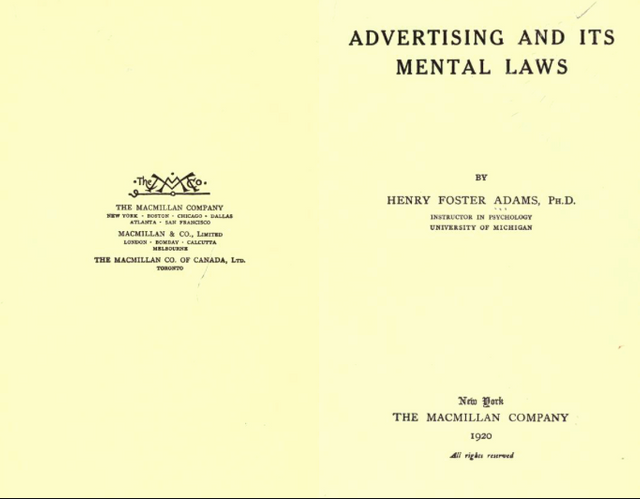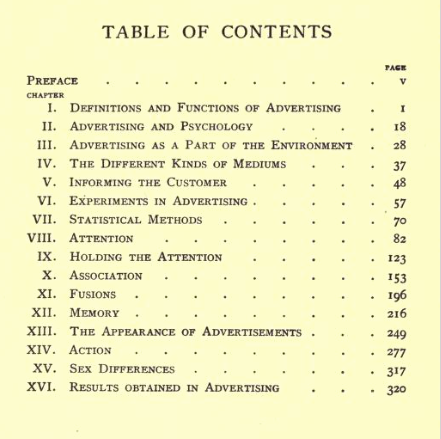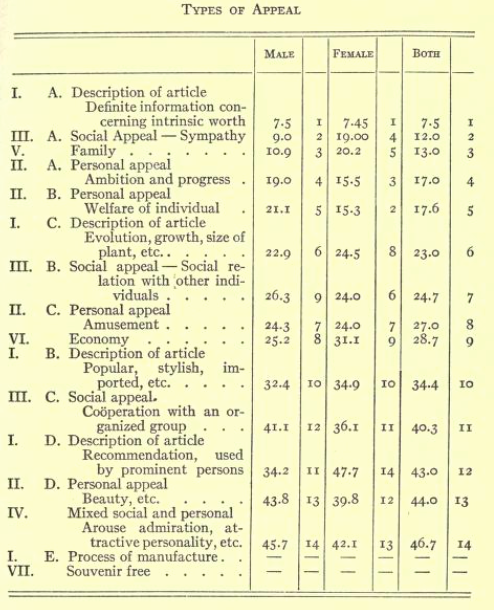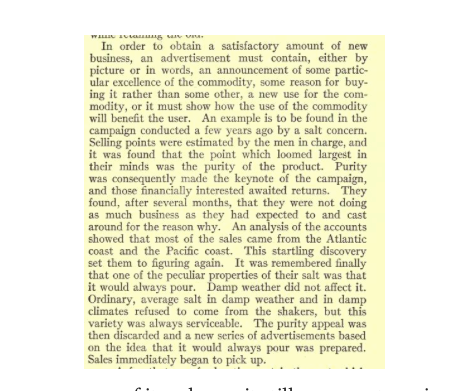Papers on Fire | Adrealm

Dear Adrealm Community,
We don’t always strive towards coherence in our publications, but when we do, we drink Dos Equis.
No, certainly not. But this week our PoF series has a specific focus: the contribution of psychological analysis to the development and/or hindrance of the advertising industry.
As you will see, the two writings chosen here represent two different perspectives: on one side, the support offered by psychology to the shaping of an effective advertising strategy; on the other side, the protection of customers, who may or may not be regarded as “victims” of more or less aggressive pop-ups, banners, billboards, and television commercials.
We have summarized the main key findings in an effort to highlight their strengths, hopeful we have prompted our readers to investigate further.
This week’s highlights:
Advertising and its Mental Laws
Henry Foster Adams (1920)

Bearing in mind that it was published in 1920, the book written by Professor Henry Foster Adams (University of Michigan) draws a comprehensive picture of the psychological factors that bear upon the effectiveness of advertising practices — and therefore, the ones that shape the customer’s mind.
Ranging from the definition of advertising and of its functions, the binomial between advertising and psychology, and finally sketching the elements that make an advertisement efficient, the book seems to rather target advertisers than customers.
Extracting conclusions from the tangle of results padded with tables and wordy, old-fashioned sentences, we’d like hereby to recapitulate the key findings of this meaningful contribution to the field of the psychology of advertising.

The book thrusts its thesis outward from the meaty theoretical background of functional psychology, which brought forward the idea that the human mind began to develop when “occasions arose” — in other words, when each step forward is produced by the perception of a need or a problem which prompts us to find a solution to it. The pragmatic philosophy of C S Pierce is in the background, here, more strongly than the positivism of Comte.
We wouldn’t stop walking and wouldn’t divert our full attention — and wake-up our consciousness — to the bump in the road, were it not for the necessity of overcoming that bump.
In the same way, the first requirement for an advertisement to be effective is that it attract and hold our attention so that our capacity of remembering the ad will increase due to the acute focus of our attention to the ad.
Such preliminary factor does not suffice to make an advertisement fully effective, and the author presents two other essential coefficients, i.e. the first favourablee impression left by the advertisement, as well as its ability to make itself memorable.
Was it so since the origins of humankind?
Adams argues that the appearance of ownership as well as of skill specialization is what produced the first advertisers, who had to resort to what we today define advertising as soon as competition made the first step on the stage.
What kind of ads does the work identify?
Complementing the current classification of advertisements as persuasive or informative based on the content of the ad, the categorization brought forward here aligns with the purpose of advertisements:
- Classified advertising: the ones that target those who are already interested in the product. Therefore, they aim to corroborate the need of the product by stretching out the hand towards customers: Hands will meet, business will lead.
- Display advertising: there was once a need, a needer, and his need to satisfy the need, thus conducting him to the source of satisfaction.
- Publicity: in the competition era, the needer is needled by a multitude of offers; the elected one may lose significance, especially when there’s a lack of variety in the offered products.
Buoyed by the increasing number of competitors, the advertiser has to create an effective strategy to reach potential customers as well as to retain the old ones.
In this regard, the author published the results of his studies on the type of appeal according to the information conveyed, ranging from the most effective approach to the least successful one (p. 145).

A short study case is offered to exemplify it: why didn't the pureness of the salt promoted by a specific company create as much traction as it did the fact that it could always be poured? (p. 33, read in the picture)

The research moves on to the analysis of the techniques to make an advertisement successful and to convert and/or retain customers (see chapters 8–12).
Without claiming the right to express any kind of judgement on the theories advanced by the book, and fully aware of the date of its release, it still represents an important early academic contribution to the Wissenschaft of the field. This text is fully and publicly available on the Internet - evidence, perhaps, that (pace the radical decentralist) not every aspect of the Internet is in every way decadent or broken.
In particular, it is interesting to reflect on its observations and "compare" them to the findings of the following article.
The Obsolesce of Advertising in the Information Age
Ramsi A. Woodcock, The Yale Law Journal (2018)
Stylistically, the author is slightly repetitious; but it cut the mustard with the referees at Yale Law Journal, so who are we to complain.
Sailing from the difference between persuasive advertising (the ones that leverage emotions to convert users into customers), and informative advertising (the kind that relies rather on facts than on the generated sentiment), the author stresses the contradictory tendency governing the information age towards persuasive advertising.
Thanks to the studies of neuroscientists, we are now able to discern between an impulsive decision-making system and a deliberative mechanism: while the former is fostered by persuasive ads, our deliberative decision-making function is inhibited, tricked by them, therefore pushing us towards the unaware purchase of either not-needed products or articles simply according to the level of "coolness" and popularity of the brand.
The author, therefore, suggests the need to update the First Amendment Protection for Advertising issued in 1976, which leaves out persuasive advertising from its protection, therefore incorporating it into unprotected commercial speech* or false advertisement.
In an era where the advertisement is mainly by way of persuasive ads (see the table from the previous paragraph), such regulations appear to be obsolete - so suggests the author - recommending the need to
[take] commercial speech out of the public square and putting it at the end of an online search query, where it belongs.
A must read, we think.
- Commercial speech is the one that clearly proposed a commercial transaction.
Want to read more?
The concept of suggestion in the early history of advertising psychology
Hoping you enjoyed our selection of articles,
L.
Adrealm Editorial and Intelligence Operations Unit
The Adrealm Editorial & Intelligence Operations Unit Think Tank
Want to stick to us? Apply for our small community: Inner Circle
Our Whitepaper
Keep in touch on Telegram
We are also on Facebook Twitter Reddit Github Discord LinkedIn Youtube Medium